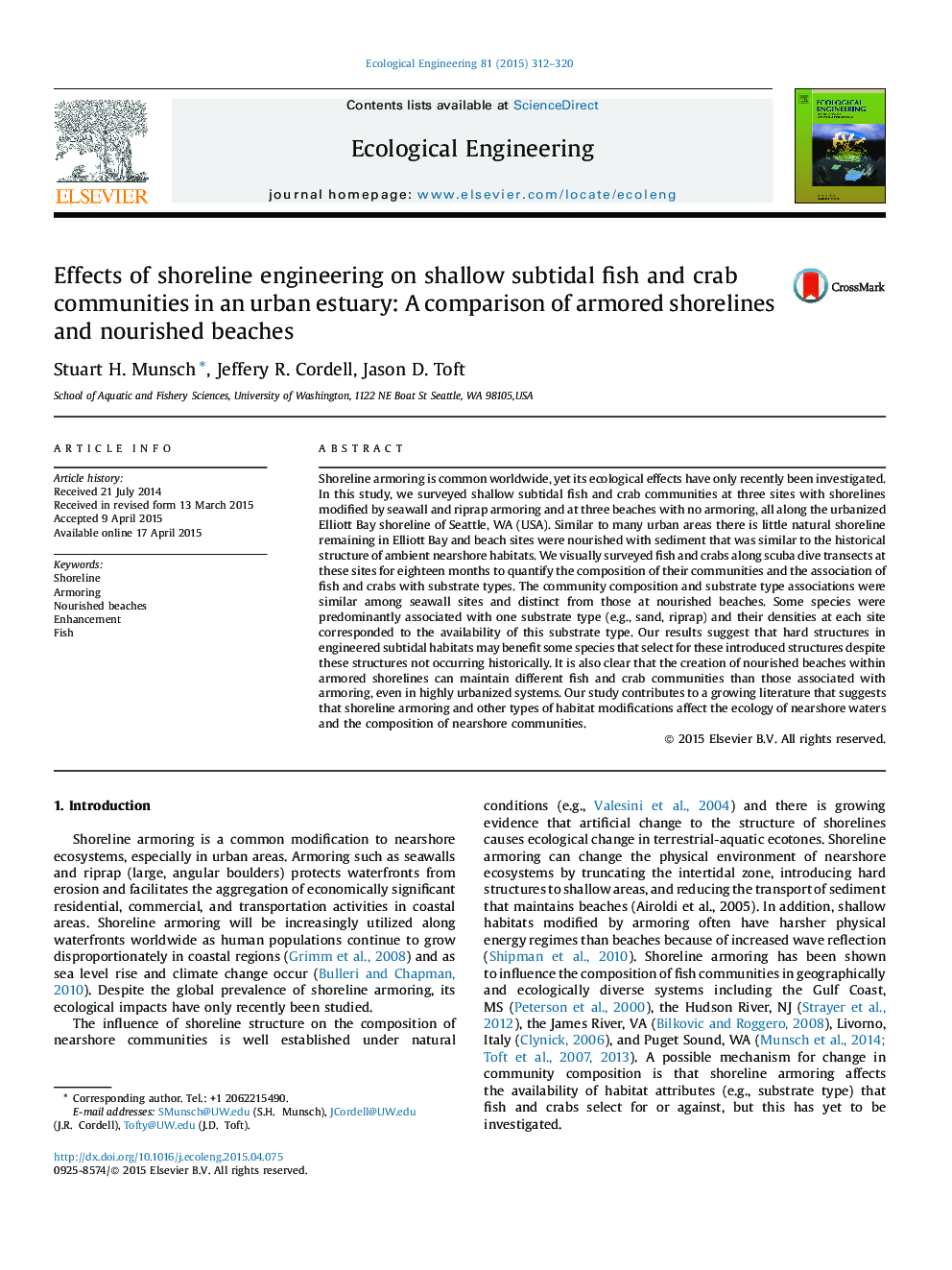| Article ID | Journal | Published Year | Pages | File Type |
|---|---|---|---|---|
| 4389087 | Ecological Engineering | 2015 | 9 Pages |
•Effects of shoreline engineering on fish and crabs are poorly understood.•We surveyed fish and crab communities at armored sites and nourished beaches.•Community composition differed between armored sites and nourished beaches.•Species that associated with one substrate type were most affected.•Fish and crabs respond to nourished beach engineering in an urban landscape.
Shoreline armoring is common worldwide, yet its ecological effects have only recently been investigated. In this study, we surveyed shallow subtidal fish and crab communities at three sites with shorelines modified by seawall and riprap armoring and at three beaches with no armoring, all along the urbanized Elliott Bay shoreline of Seattle, WA (USA). Similar to many urban areas there is little natural shoreline remaining in Elliott Bay and beach sites were nourished with sediment that was similar to the historical structure of ambient nearshore habitats. We visually surveyed fish and crabs along scuba dive transects at these sites for eighteen months to quantify the composition of their communities and the association of fish and crabs with substrate types. The community composition and substrate type associations were similar among seawall sites and distinct from those at nourished beaches. Some species were predominantly associated with one substrate type (e.g., sand, riprap) and their densities at each site corresponded to the availability of this substrate type. Our results suggest that hard structures in engineered subtidal habitats may benefit some species that select for these introduced structures despite these structures not occurring historically. It is also clear that the creation of nourished beaches within armored shorelines can maintain different fish and crab communities than those associated with armoring, even in highly urbanized systems. Our study contributes to a growing literature that suggests that shoreline armoring and other types of habitat modifications affect the ecology of nearshore waters and the composition of nearshore communities.
